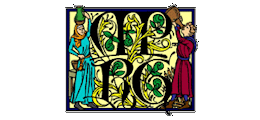A Guide to the Classification of Medieval Ceramic Forms
Medieval Pottery Research Group, 2020. https://doi.org/10.5284/1059287. How to cite using this DOI
Data copyright © Medieval Pottery Research Group unless otherwise stated
This work is licensed under a Creative Commons Attribution 4.0 International License.
Primary contact
Medieval Pottery Research Group
c/o Museum of London Archaeology,
46 Eagle Wharf Road
LONDON
N1 7ED
Resource identifiers
- ADS Collection: 3669
- DOI:https://doi.org/10.5284/1059287
- How to cite using this DOI
Introduction

'A Guide to the Classification of Medieval Ceramic Forms' (Medieval Pottery Research Group Occasional Paper 1) was published in 1998 with grant funding from English Heritage. It provides a definition and nomenclature for ceramic forms made between the end of the Roman period and the beginning of intensive industrial pottery production in the 17th century. In 2019 grant funding from Historic England enabled MPRG to commission a project that has re-created the 'Guide' as an accessible on-line reference resource which is fully searchable, utilising interactive navigation and hyperlinks throughout the text.
The 'Guide' presents a typology that aims to enable practitioners to identify vessel forms, clarify definitions in common usage and standardise the terminology used to describe and record vessel forms in pottery assessments, analyses and reports. The use of a standardised terminology facilitates consistent recording of medieval and early post-medieval pottery and thus the comparative study of pottery assemblages that may have been excavated and recorded by different organisations or individuals within the same local area, region or at national level.
The 'Guide' performs a key role in enabling medieval and early post-medieval pottery to be recorded and analysed to the standard directed by 'A Standard for Pottery Studies in Archaeology' (Prehistoric Ceramics Research Group, Study Group for Roman Pottery and the Medieval Pottery Research Group 2016. Link to PDF), that enables pottery assemblages to be understood to their full potential.
It is hoped that this on-line reference resource will encourage the use of nationally accepted standards of recording pottery and enable them to be more actively promoted to all those working with pottery from archaeological excavations and anyone monitoring, managing or advising on such work. The 2015 'Historic England Strategy for Developing Research Resources' highlights the importance of reference resources, including typologies, for underpinning the research essential for the assessment of the significance of heritage assets, enabling the potential value of developer-led projects to be fully realised so that knowledge of the historic environment can be advanced for public benefit (Section 4, Section 6 paragraph 6.2).
In addition to providing developer-led projects with an accessible reference resource MPRG wishes also to make the 'Guide' as widely available as possible so that students, community groups and anyone with an interest in pottery will be able to learn more about and understand medieval and early post-medieval pottery and its function and purpose in past societies and human life.
MPRG is grateful to Historic England for providing funding for the digitising of the 'Guide' and its dissemination through ADS and to the project team for seeing the project through to completion: Maria Geals (digitisation), Lorraine Mepham (who took the lead in copy-editing and proof reading the text), Duncan Brown and Julie Edwards.
The 1998 publication of the 'Guide', which is still in print, was the combined effort of many members of MPRG who are named and acknowledged in the publication and to whom the Group remains forever grateful.





